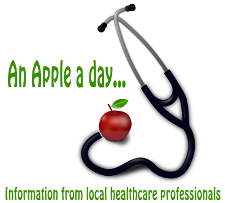By Elaine Burns
 It used to be that your local pharmacy or drug store dealt with only, well … drugs. Oh, there may have been some furtive Saturday night condom buying, or in the case of Mr. Gower’s pharmacy in It’s a Wonderful Life also a soda fountain. For those of you under 50 that is so much more than a fountain that pours Coca Cola!
It used to be that your local pharmacy or drug store dealt with only, well … drugs. Oh, there may have been some furtive Saturday night condom buying, or in the case of Mr. Gower’s pharmacy in It’s a Wonderful Life also a soda fountain. For those of you under 50 that is so much more than a fountain that pours Coca Cola!
Today you can purchase cosmetics, groceries, clothing, greeting cards and medical aids. It can be easy to forget the prime function of pharmacies. There’s no one who knows more about your medications, both prescribed and over the counter (OTC). No one understands drugs, their function, how they work or more importantly conflict with other drugs and their side effects. Your health cannot be its best without a healthy relationship with your pharmacist.
Becoming a pharmacist in Ontario is a difficult, long road with a minimum of five years education after high school. First there must be enrolment and completion of at least two years in a Bachelor-level program with a science focus, then acceptance into a four-year Pharmacy degree program.
A pharmacy licence is granted after practical experience and successful completion of a Canadian exam. Licensing is granted through the Ontario College of Pharmacists (OCP). The OCP is given the responsibility to regulate pharmacists through the Relegated Health Professional Act of Ontario (just like physicians, nurses, and many healthcare professionals we will be looking at). As such, their focus is to protect the public. Information on OCP can be found at www.ocpinfo.com.
Many pharmacists then go on to do post-graduate training such as:
A one-year residency in hospital or community pharmacies
A one-year internship in the pharmaceutical industry
Courses leading to a Masters or PhD in Pharmacy
Certification in diseases such as diabetes and asthma
Ongoing education in specialties such as geriatrics or menopause.
There is a large range of places in which pharmacists can work, including community or hospital pharmacies, the pharmaceutical industry, family health teams, education, government or regulatory settings such as in Health Canada, professional associations such as the OCP, research, business, or the armed forces.
More information on the roles of pharmacists can be found at www.pharmacistsoffermore.ca.
So…How can they help you?
Pharmacists are the experts in explaining your medications. They can tell you the best way to take your medications, the possible side effects, how to manage and store them, and interactions with other medications, food, and drink.
Once again it is imperative that they see you! I am not going to stop harping on this till you all get it. Healthcare is not the best when remote-controlled.
When should you see them?
There are four times when it is a must for you to see your pharmacist.
1 – When filling a new prescription:
Be prepared to tell your pharmacist about allergies and other medications you are taking. If you deal with only one pharmacy then they will have this information on file for you. But it always helps to review this.
Discuss why you are going to be taking this medication. Some meds have more than one use and your pharmacist needs to know the specific reason you are taking this new medication.
2 – When picking up a new prescription, you will need information from your pharmacist on:
Why you are taking this medication
What are the benefits of this medication
What are the side effects
Can you stop the medication suddenly if you cannot tolerate it
How much are you taking (dose)
When should you take it (number and time of day)
When should you take it in relation to meals and bedtime
What should you do if you forget a dose
What should you avoid (food, drink, activity)
How do you store this medication
How long should you take it
When you should follow up with the professional who prescribed the medication.
3 – If you are pregnant or breastfeeding there should be a conversation with your pharmacist on:
How pregnant you are (medication safety and effects change in each trimester)
What other conditions do your suffer from
What complications you have had with this pregnancy or previous pregnancies
Which prenatal vitamin you are taking (again OTC medications are just that…medications)
How often you breast feed. It can be possible to decrease the effect on the baby by spacing out the medications.
What side effects you should be watching for in your baby (some medications are passed to the baby when breastfeeding).
4 – Upon discharge from hospital.
Many hospitals have started programs of medication reconciliation on admission and again on discharge. In this process a pharmacist reviews the medications you are taking when admitted, makes sure those medications are either continued or discontinued while in hospital and looks at possible interactions with medications ordered while in hospital. On discharge this is reviewed with the patient and either a paper form is given to you to take to your pharmacist and/or an electronic version is sent to your pharmacist. This process was established because statistics showed that the number one reason for re-admission to hospital was due to medication issues.
So on discharge, you or someone responsible for your care needs to discuss the following with the pharmacist. It is also a really good idea to bring that basket, bag, drawer or shoe box with ALL your medications in it.
The pharmacist will then be able to:
Change your list of medications on file at the pharmacy and update it. This list is valuable to healthcare providers if you are unable to speak for yourself and you have not heeded the advice in the first column about carrying your list of medications on a piece of paper near your health card.
Dispose of unneeded medications. Many tragic health issues arise when people take all their new medications and their old ones too. This is often the reason for an emergency trip to the hospital.
Make you aware of dosage changes. If you took one of your blue pills and now you only need to take half of it that is important.
Ask you about any reactions to medications given in the hospital. Again, a med might have been started or stopped because you reacted to it and another medication ordered. Your pharmacist needs to be aware of this in case that med gets ordered in the future. There is also a requirement to report drug reactions to Health Canada so that data can be collected.
Over the last few years, there have been changes to what a Part A pharmacists can do. Part A pharmacists are those actually dealing with the public in either an educational consulting role or in actually dispensing medications. This expanded role will be of value to you and includes:
Giving flu shots
Recommending treatment and or lifestyle changes or referrals to other healthcare professionals
Screening for cholesterol
Support in managing chronic conditions
Helping you quit smoking and ordering medications to help with that
Explaining how to use healthcare aids and devices like canes, splints and supports. Also how to use a glucose meter to monitor your blood sugar and how to use an inhaler for asthma.
Generalized health and wellness information.
Med-Check Consultations: this is an OHIP-funded program whereby people with multiple medications and/or chronic diseases can have a once-a-year consultation with their phamacist about their medications and their general well being. Follow-up appointments, if needed, can also be covered. This is an excellent service for those who meet the criteria.
Soda fountains, cards, cosmetics, shampoo, etc. notwithstanding, there are excellent reasons to spend time at your pharmacy. As George Bailey (It’s a Wonderful Life) says every time he goes into Mr. Gower’s drugstore, “Hot dog!”











